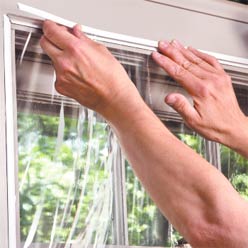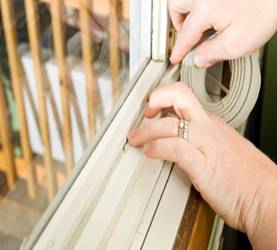It's Time to Winterize your Loft and Basement


Simple Winterization Tips and Tricks
With winter months practically upon us, now would be the perfect time to consider applying some simple yet effective winterization tricks to your loft and basement, as probably the greatest sources of heat loss Namely, just as heat rises and can easily escape your home through your loft space, the cold from the basement can just as easily penetrate your home through all the gaps and discontinuities in your building envelope. Apart from the fact that through some simple measures you can add another layer of protection to your interior and thus increase its energy efficiency, you can also use the opportunity and convert your loft and basement into a living space and utilize the best of your home. Well, these measures can vary from simpler ones that are usually not too costly to some more serious and money consuming ones, which are however also much more effective on the long run. Thus, you can carefully plan your budget and undertake the necessary and affordable steps accordingly, so get ready since it’s time to winterize your loft and basement!
Tip No.1 – Seal air leaks
The first thing you need to do when preparing your loft and basement for the winter is to conduct a thorough inspection and look for air leaks. It would be best to do this when it is windy and rainy outside since this will give you a much clearer picture of the level of airtightness within your home. Pay special attention to areas around windows and doors, at wall edges and around junctions. If there is any hole or a wet spot on the wall, make sure to check whether you have any moisture and damp problems since these can also contribute to heat loss within your home. One possible way of dealing with the problem is by caulking around all penetrations in the building structure, both in and out. Draughty windows are another issue and potential source of air leaks, so if you are not planning on replacing your loft and windows, try to protect them as much as you can by, for example, replacing the screens covering the windows with some plastic film and storm shutters or some other more efficient window treatments that will keep the draught out and away from your home.


Tip No.2 – Take care of loft stairs and hatches
Since stairs to your loft are usually a hole in your ceiling, it can present a great source of heat loss since as the heat rises, it will simply escape through the ceiling thus lowering the inner temperature of your household, which is something you would want to avoid, especially if you are not using your loft as a living space. This problem can be dealt with covering the opening with some specialized wooden or plywood boxes which you can buy or even make yourself, Another alternative (a simpler and cheaper one) can be found in using some plastic or tarp to seal the opening.
Tip No.3 – Add insulation
This loft and basement winterization tip can be somewhat more expensive initially but is a must, regardless of whether you are using these areas as living spaces or not. The only difference is in the insulation material and method of insulation. When insulating your loft, make sure that the material is thick enough so it not only ensures adequate protection but is also in compliance with applicable regulation. There are many alternatives you can choose from when it comes to the insulation material, but this will depend on the size, location and accessibility of your loft space. One solution is to add fibre insulation between and over the joists, while another can be found in specialized blown-in or sprayed foam insulation which is inserted into the loft via special equipment, why you will probably need professional assistance. As for your basement, the best are to insulate here are the basement walls which can be insulated either internally or externally, depending on your budget. If your basement is used solely as a storage room and does not need to be additionally heated, you could consider adding some insulation to the ceiling and thus preventing the heat from travelling down from your upper floors. The most commonly used insulation material for basement walls winterization, if insulated internally, are fibre or rigid insulation. However, please note that basements can be moist and damp places, why you must take care of potential moisture problems prior to adding insulation.
Tip No.4 – Cover the duct and pipe work
It is not uncommon for loft and basement spaces to have exposed ducts and pipes, why these need to be taken care of, if you are planning a full winterization of your loft and basement space. You will notice that proper protection of pipes will not only contribute to your home’s energy efficiency but also prevent the pipes from freezing and bursting, which can cause a much more serious problem. You could use some aluminium tape to wrap the ducts grooves and joints and some insulation wrap for your pipes. This can be either a foam wrap that can be found in any hardware store or some fibre insulation (such as mineral wool) where you can make the pipe wrap yourself. You can even use leftovers from insulating the rest of your basement or loft and wrap it around the pipe and secure it with some aluminium tape.
Tip No.5 – Pay attention to the little things
You would be surprised of how even the smallest things can go a long way in winterization of your home. For example, you could check and replace your furnace filters since if these are worn out, this can lead to your furnace working less efficiently, so with new filters, it will not take much time before you notice just how faster your interior will warm up. The same logic can be applied to your loft fans. Simply turn the fun to a reverse position so that it draws warm air up, instead of spreading cold air through the loft space.
Insulation Shop offers quality insulation at affordable prices and big discounts. Send your quote enquiries to info@insulationshop.co or order directly from our insulation webshop.




































































































































